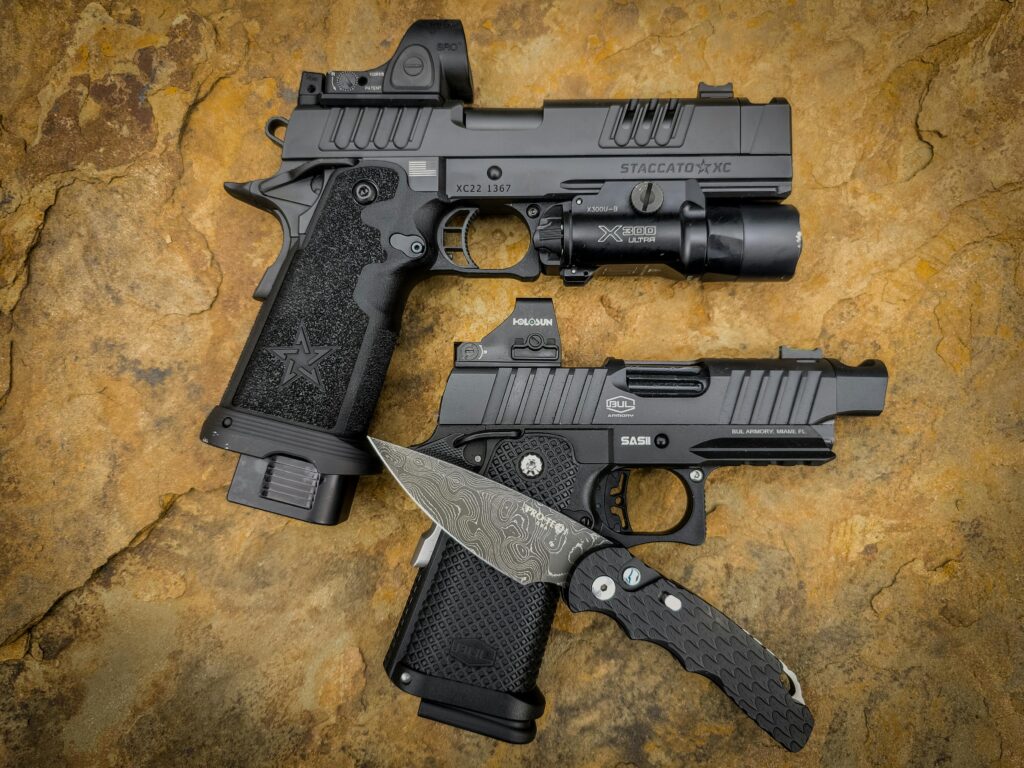
How to pick the right handgun for concealed carry isn’t just a matter of picking something small and easy to hide. It involves balancing comfort, reliability, performance, and personal confidence. Whether you’re new to concealed carry or looking to upgrade your current setup, here’s how to make a smart, informed choice.
It involves balancing comfort, reliability, performance and personal confidence. Whether you’re new to concealed carry or looking to upgrade your current setup, here’s how to make a smart, informed choice.
Before we dive in, just a quick note: some of the links in this article are affiliate links. That means if you decide to buy something through one of them, we may earn a small commission, at no extra cost to you. It helps support the site and keeps the content free and honest.
Understand Your Needs and Environment
Before diving into brands or calibers, ask yourself:
What’s my level of experience with firearms?
Will I carry daily or occasionally?
What’s my typical attire? (Baggy hoodie or tailored suit?)
Am I prioritizing discretion, capacity or shootability?
Your environment plays a huge role. Urban settings might favor compact options for minimal print, while rural environments allow for slightly larger models without sacrificing concealability.
Smaller isn’t always better. For concealed carry, a smaller gun may be easier to hide, but tiny pistols can be tough to shoot accurately or rapidly. Think about these categories:
Micro compact: Extremely easy to conceal, often chambered in 9mm. Great for ultra-discreet carry.
Subcompact: A bit larger, offering better ergonomics and sometimes higher capacity.
Compact: Often easier to shoot well, with respectable magazine capacity. These are versatile and popular among daily carriers.
Try handling options in each category to see what fits your hand and comfort level best.
Weight and Materials
Lighter guns are easier to carry all day but may have more recoil. Heavier pistols absorb recoil better but can strain your waistband. Most concealed carry handguns fall into these material types:
Polymer frames: Lightweight, common in modern pistols.
Steel or aluminum frames: Heavier but durable and shootable.
Remember, comfort matters. A gun you dread carrying will likely end up at home when you need it most.
Caliber and Capacity
Most CCW handguns are chambered in:
9mm: Well-rounded choice. Manageable recoil, affordable, effective.
.380 ACP: Less recoil, but performance varies by ammo.
.40 S&W or .45 ACP: More punch but harder to control in small frames.
Opt for what you shoot well. Higher capacity can mean better readiness, but balance it with size and weight considerations.
Reliability and Testing
The gun must go bang every time. Research real-world reliability and avoid unproven gimmicks. Before trusting a handgun for carry:
Run at least a few hundred rounds through it.
Test with your chosen self-defense ammo.
Practice drawing, firing and clearing malfunctions.
Sights, Controls and Ergonomics
A clean sight picture is crucial in self-defense. Consider:
Night sights or fiber optics for visibility.
Simple controls, manual safeties, slide releases, mag releases.
Natural pointability and comfortable grip texture.
You should be able to operate the handgun smoothly under stress and with one hand if needed.
Even the best handgun is ineffective if your holster is a pain. Invest in:
A high-quality holster that offers retention and comfort.
A sturdy belt designed for CCW.
Apparel that accommodates and conceals the weapon.
Try different carry positions like appendix, strong-side or shoulder carry until you find what works.
Final Thoughts
Confidence and consistency are key. Choose a handgun that you’ll train with, carry regularly and trust with your life. It doesn’t have to be the latest model or the one with the most YouTube hype, just something reliable, shootable and suitable for you. To learn more about choosing your first gun click here.
